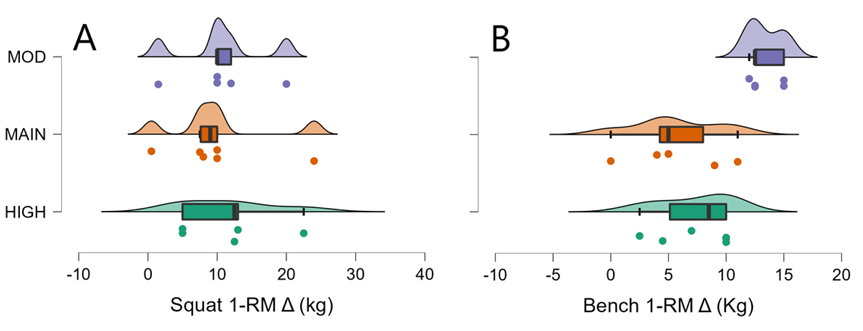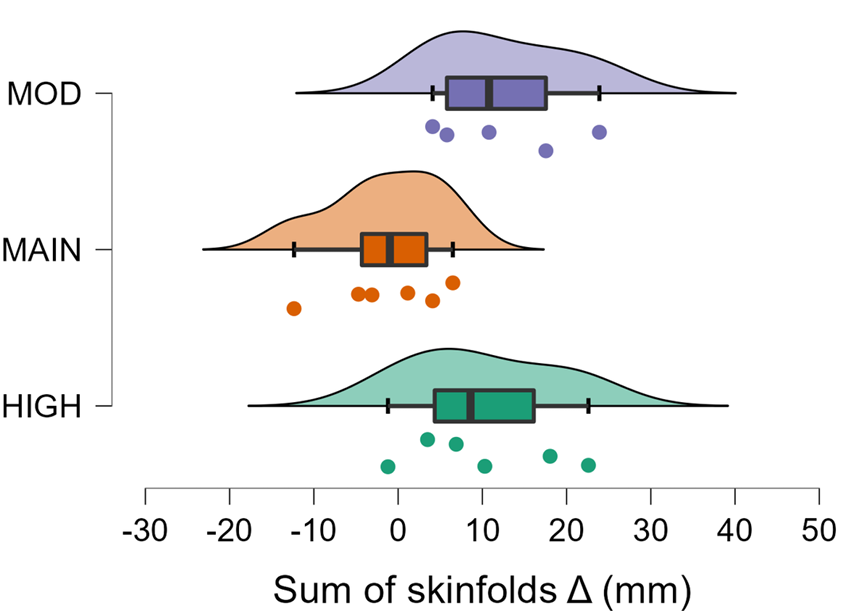Are you gaining weight too quickly?
When bulking, gaining weight too fast results in excess fat gain.
Reading time: 5-7 minutes
Take-aways
Bulking with a surplus of ~3-500 calories vs ~1-200 calories mostly just led to greater bodyfat increases.
For growth, start a bulk ~5-10% above maintenance calories. Adjust as needed to gain around 1% of bodyweight per month.
A 1-200 calorie surplus generally led to the most favourable strength improvements. That said, maintaining resulted in robust strength improvements, too.
To maximise strength gains, start a bulk around 5% above maintenance. Adjust as needed to gain around 1% of bodyweight per month.
The muscle group being trained most effectively (biceps) may have benefitted from a surplus more than other muscles.
If you’re in a good position to gain muscle (good genetics/training/sleep/nutrition or you’re new to lifting), you may benefit from up to 2% of bodyweight gained per month.
You can see great progress maintaining rather than bulking.
A few months ago, a new study on bulking by Helms and colleagues was pre-printed.
Methods
This study sought to compare the muscle growth, fat gain and strength gains of three groups. Group one maintained bodyweight (MAIN), one group was in a modest calorie surplus (5% over maintenance - MOD) and one group was in a high calorie surplus (15% over maintenance - HIGH).
All groups trained 3 days a week, doing a combination of strength work on the squat/bench press and hypertrophy work. Most muscle groups were trained with ~10 sets/week, with the exception of the biceps, that was trained with 18 set/week. This bit is important, so remember it.
Muscle growth was assessed via ultrasounds of muscle thickness of the quadriceps, biceps and tricep muscles. Fat gains were measured using skinfold thicknesses. Finally, strength was assessed by 1 repetition-maximums (heaviest weight you can lift for one rep) in the squat and bench press.
Here’s what they found.
For the squat, no clear differences were found between groups. For the bench press, a 5% calorie surplus was very likely superior to maintenance or a large surplus.
The one thing that gaining more bodyweight did convincingly achieve was increases in fat mass (as measured by skinfold above).
Changes in muscle thickness from pre- to post-intervention. MT=muscle thickness, Δ=change, VL=vastus lateralis, VI=vastus intermedius, RF=rectus femoris.
For muscle growth, there was no clear benefit of a calorie surplus. Growth was similar whether participants were maintaining, in a modest surplus or in a high surplus.
There was one potential exception - the biceps’ increases in muscle thickness may have been a result (BF10 = 1.4). Without going into too much detail, this means that it is 1.4 times more likely that changes in bicep thickness were partially a result of changes in bodymass (i.e. surplus) than not.
So, overall, a modest surplus may have been slightly better for muscle growth, but maintaining broadly resulted in similar muscle growth.
Why?
As mentioned earlier, the biceps received the best training stimulus in this study, being trained with 18 vs ~10 sets/week, compared to other muscle groups.
Therefore, it is possible that, when conditions for muscle growth are superior (e.g. when taking PEDs, new to training or training very effectively), a larger calorie surplus may facilitate additional growth. This requires further evidence, but seems intuitive enough.




